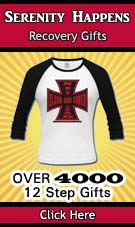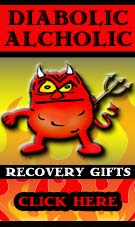Why We Call It The Big Book

A printer in Cornwall, NY, named Edward Blackwell, had been highly recommended to Bill Wilson. Blackwell was the President of Cornwall Press. So Bill and Hank Parkhurst (author of the personal story “The Unbeliever” in the first edition of the Big Book) went to Cornwall to see Blackwell. There they were told that the book would probably be only about four hundred pages when printed. That seemed a bit skimpy. They wanted to sell the book for $3.50 per copy. That was a very large sum in those days, probably the equivalent of about $50 today, and people might not think they were getting their money’s worth.
They picked the cheapest, thickest paper the printer had, and requested that each page be printed with unusually large margins surrounding the text. This made for an unusually large book. Thus, the book came to be nicknamed the “Big Book.”
Blackwell had an excess of red material for the bindings, so he offered them a special deal. Eager to save costs, Bill and Hank agreed. They also thought, according to some reports, that the color red would make the book more attractive and marketable.
A New York AA member named Ray Campbell, a recognized artist, was asked to design the dust jacket. His story, “An Artist’s Concept”, appears in the Big Book’s first edition. He submitted various designs for consideration including one which was blue and in an Art Deco style. The one which was chosen was red, and yellow, with a little black, and a little white. The words Alcoholics Anonymous were printed across the top in large white script. It became known as the “Circus” jacket because of its loud circus colors. The unused blue jacket is today in the Archives at the Stepping Stones Foundation.
The first printing was the only one on which a red binding and the red “Circus” dust jacket was used.
All the other printings of the first edition, except for the fourth printing, were in various shades of blue. The fourth printing, due to another overstock of binding material and thus, lower cost, was bound in blue as well as in green.
Bill Wilson, Hank Parkhurst, Dorothy Snyder (Clarence Snyder’s Wife) and Ruth Hock, Bill’s secretary, went to the little hamlet of Cornwall many times to oversee the printing and correct the galleys before the final galleys were approved as ready for printing.
Despite all their efforts at proofreading, there was a typographical error in the first printing. On page 234, the second and third line from the bottom was printed twice. This was corrected in the second printing.
Bill, and finally the Alcoholic Foundation, raised the necessary funds to cover the initial printing costs, as Ed Blackwell could not roll the presses until, and unless, they came up with at least enough money to cover the cost of the paper.
A run of four thousand seven hundred and thirty copies rolled off the press in April 1939. Two-hundred seventy-nine books were distributed without charge. In rare book auctions today in 2001, a first printing Big Book will command well in excess of $10,000. About 8 years ago a “virgin” first printing Big Book in the original sealed shipping box was bought at auction for well over $10,000, and the buyer did not even open the box to verify the book was inside, as it is more valuable in the sealed box. Members today continue to hope that more copies of first edition printings will be found and brought to light, instead of collecting dust in some attic or basement. First edition printing dates are given in “The First Edition Big Book Stories” at “Printing History of the First Edition”
A reproduction of the first printing can be purchased today and it is much taller and thicker than our current Big Book, although it has fewer pages.
Written by Nancy O
Bill relapsed again on December 11, 1934, he was again admitted to Towns Hospital for the last time.
This site is not affiliated with Alcoholics Anonymous World Services, Inc.(AAWS). AAWS has neither reviewed nor endorsed the contents of this site. These pages are not endorsed nor approved by Alcoholics Anonymous World Services, Inc. They are only provided as part of the sites owner’s 12 Step work in reaching out to the alcoholic who still suffers. Some of the items on these pages were originally published by A.A. World Services, but do not assume that this implies continued approval by the General Service Conference for their use in these pages. Alcoholics Anonymous, A.A., and The Big Book are registered trademarks of Alcoholics Anonymous World Services, Inc. The Grapevine and AA Grapevine are registered trademarks of The AA Grapevine, Inc.




